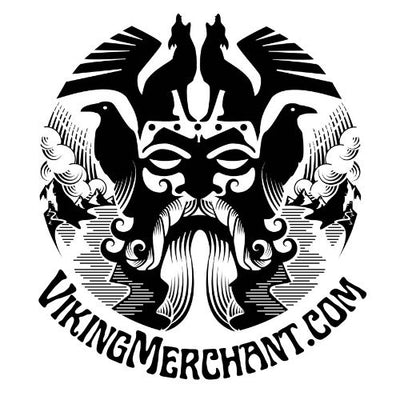The Dual Nature of Mjölnir (Thor's Hammer)
Posted by Amber Lee on
The dual nature of Mjölnir as both a weapon of destruction and a sacred tool of blessing is deeply embedded in Norse mythology.
Mjölnir, as a symbol, embodies this balance and serves as a reminder of the divine presence in both the benevolent and wrathful aspects of the world, underscoring the harmony between opposing forces in the cosmos.
This dual nature reflects a duality in the divine, where the gods are not only creators and sustainers but also destroyers when necessary. This juxtaposition of destruction and blessing emphasizes the balance in the divine approach to the cosmos and life, representing both the creative and destructive forces of nature and existence.

Below, both aspects are explored in detail:
Weapon of Destruction
a. Battle Against Giants: Thor, the wielder of Mjölnir, is the protector of both gods and humans, and his hammer is his primary weapon against the Jotnar (giants), the traditional foes of the gods. It is depicted as an incredibly destructive force, capable of leveling mountains and defeating formidable foes.
b. Unstoppable Force: Mjölnir is said to be unstoppable in its trajectory, always hitting its target and then returning to Thor’s hand. This represents the unavoidable nature of divine retribution and the relentless pursuit of justice.
c. Symbol of Defense: Despite its destructive power, Mjölnir is primarily a defensive weapon used to protect Asgard and Midgard (the realm of humans) from those who would do them harm. It embodies the need to fight and stand ground against the forces of chaos and destruction.
Sacred Tool of Blessing
a. Consecration and Protection: Thor’s hammer is used to consecrate places, objects, and people, making them holy and protected from harm. This aspect of Mjölnir transforms it from a mere weapon to a divine tool capable of bringing sanctity and divine protection.
b. Fertility Symbol: Some interpretations of Norse mythology suggest that Mjölnir is a symbol of fertility and was invoked for blessings during marriage ceremonies. The hammer’s association with thunder and rain likely contributed to its connection to fertility, as rain is essential for crop growth.
c. Resurrection: In one of the myths, Mjölnir is used to bless Baldr’s body during his funeral. Loki, disguised as a giantess, refuses to weep for Baldr, preventing his resurrection, but the use of Mjölnir in the ceremony underscores its role in life and rebirth.
Share this post
- Tags: Mjölnir, norse, Thor's hammer, totem, viking
